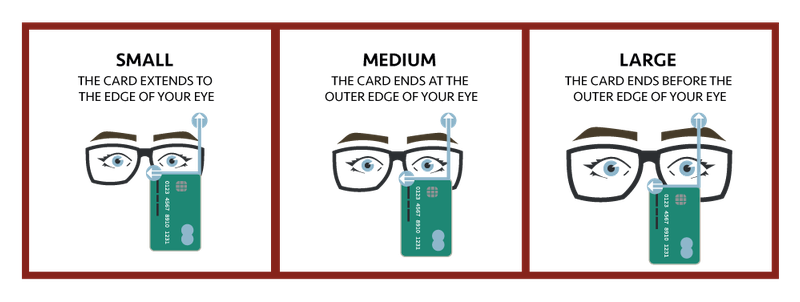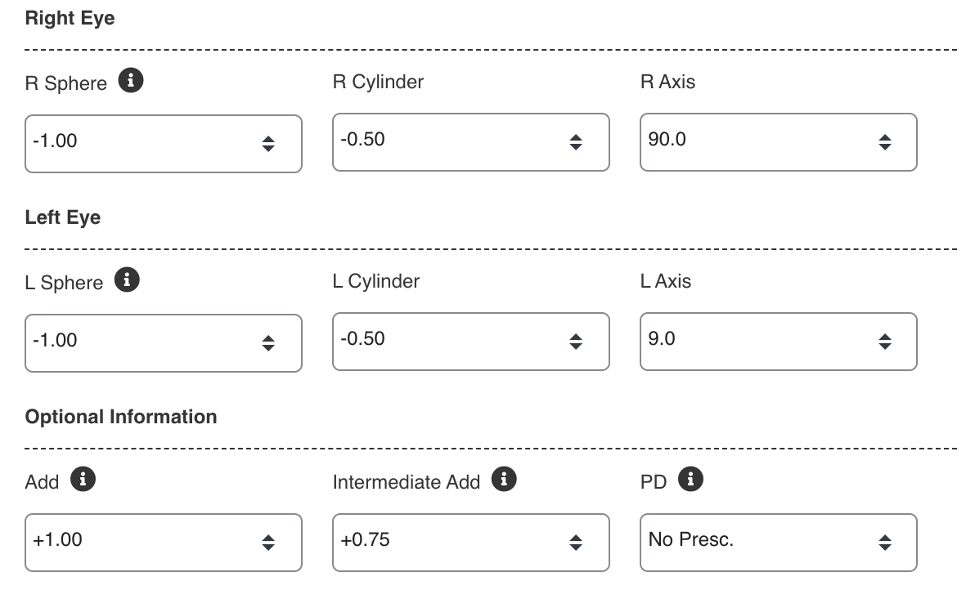How to get your prescription
Before you can order prescription glasses or sunglasses online, you must have a copy of a prescription from a previous eye test. If you haven’t got one, ask the optician who issued your last glasses prescription. They are obliged by law to provide it for you.
Always ensure that the prescription is less than 2 years old (1 year if you are 70 or over). This is as recommended by the Association of British Dispensing Opticians and is a safeguard to ensure that the prescription is accurate as your eyesight may change over time.
You can also attach a copy of your prescription via the upload button for extra piece of mind.
Understanding your prescription
On the Designer Glasses website, prescription information is entered during the ordering stage. For a brief explanation of what information we will need, please read the guidelines below.
- Measurements are specific for each eye. R (Right ) and L (Left). Take care to ensure that measurements from your prescription are entered correctly.
- Sphere (Sometimes denoted as SPH on a prescription) is an indication of how long sighted or short sighted you are. It is represented by a decimal value, with a higher number showing the strength of lens required. A positive value (+) indicates that you are long sighted and a negative (-) sphere value is required to correct short sightedness. The higher the number, the stronger the lens required. A prescription may have the word Plano (Pl) or an infinity sign (~), this means that you are neither long nor short sighted but zero power for the Sphere.
- Cylinder (Sometimes shown as CYL) indicates the amount of correction required for your astigmatism. If you do not have an astigmatism, leave this as ’No Presc.’ when ordering with us. (On a prescription this is sometimes represented by ‘DS’ in the cylinder column.)
- Axis indicates the direction of your astigmatism. It is measured in degrees between 0 and 180 and is the angle at which the lens is set into the frame. Note: If you have a Cylinder reading on your prescription, you must have an Axis reading and vice versa.
- Add (Sometimes shown as Reading or Near Addition) indicates how much additional power you need to focus for reading or close up work. It is always a positive value and almost always the same for each eye. As such, it may only appear once on your prescription.
Please also enter what the main purpose of your eyewear will be. i.e. Distance, reading, computer or everyday use.
Not all the information on a prescription may be required. Our aim is to ensure that all prescription eyewear purchased from Designer Glasses have the correct lenses and provide clear and comfortable vision. Our experienced opticians will check the details entered prior to processing an order and contact you if there are any issues.
Pupillary Distance
Pupillary Distance (Often denoted as PD) is an essential measurement. It is the distance from the centre of one pupil to the centre of the other pupil measured in mm.
Pupillary distance - The total distance between both pupils

The PD is generally measured during an eye test, but is not routinely written on a prescription, and therefore may be omitted. Please ensure that you ask for this from your opticians, or ask them to add it to your prescription when you are tested.
If you are unsure or need advice, please contact us on +44 (0) 800 731 8118 or email : [email protected] to talk to one of our qualified staff who will be happy to help you with any prescriptions questions you may have








